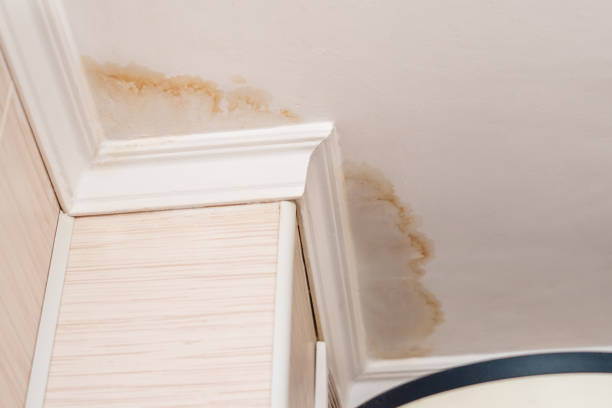Water can damage your property in several ways, particularly if it can enter the walls and do so. Finding ways to prevent water from entering the home at all is preferable. However, what will happen if water is let enter your walls?
What happens if water enters your walls?
It causes fungus and mold growth
The area behind the walls is ideal for fungi and mold. Removing mold and fungi is impossible, but stopping leaks can be beneficial. Coughing, sneezing, and congestion are just some of the problems that mold and fungi cause. Serious sickness is more likely to affect those with weakened immune systems.
Mold can also leave the house with unpleasant musty odors that linger. Considering the porosity, cleaning walls of mold or fungus might be challenging.
It stains your walls
Because drywall and sheetrock are porous materials with several holes, the water leaking through the walls could discolor them because they both readily absorb water. A concealed leak in the wall is prominent if the stain intensifies with time or the wall bulges.
It damages your walls
Wall stains are a telltale sign of water leaking. Water can severely damage walls if not dealt with, prompting costly repairs. Warping and peeling paint or wallpaper are typical signs of water damage to walls.
Drywall and wet sheetrock are weaker and likely to break. The house’s structural integrity gradually deteriorates. It is extremely risky to ignore wall deterioration since they can eventually collapse.
Wallpaper or paint starts peeling
The wallpaper and paint can ultimately bubble or peel if there is too much moisture behind your wall. This often occurs when the sheetrock behind the wall absorbs too much water. If the leak cannot be seen, attempt to find it by inspecting the wallpaper for separation or peeling paint at the seams.
The house loses value
Any house that has previously had water damage usually sells for less money. Owners may assert that the damage has been repaired, but there is a chance that some problems will still exist.
Frequent house maintenance is the best way to stop value loss. Look for any signs of structural damage and leaks. The home is safeguarded from further problems and keeps its value if professionals can treat the damage sooner.
How to tell if walls are wet and what to do if they are

The length of time drywall is exposed to water directly affects the degree of damage. You might still be able to rescue it, depending on how wet it is. Follow these instructions to assess the damage if your basement has been flooded or otherwise affected by water.
- Find out whether the drywall is moist. There are a few methods for determining whether your drywall is damp. A non-penetrating moisture meter is your first option. The alternative is to remove the baseboards and attempt poking holes in the drywall below with a screwdriver. The drywall is damp if it is mushy, and a screwdriver penetrates it.
- Check the interior of the wall. The wall’s interior should be checked for moisture using a penetrating meter. Another way to accomplish this is to make a hole big enough to inspect the studs for moisture. It’s essential to inspect any insulation you come across for moisture, especially if it’s made of fiberglass or cellulose.
- Replace moisture-damaged walls. If moisture is discovered, you will have to cut two feet up the wall to remove the wet insulation and drywall, both notorious for harboring moisture for an extremely long period. Mold clusters can grow inside the wall if the moisture-damaged components aren’t removed. New insulation needs to be changed since old insulation starts to lose its R-value when it gets wet.
- Bring in the professionals. It takes skill to remove items exposed to mold. It is advisable to hire a skilled specialist to complete this task to avoid spreading mold spores throughout the house. The spores may also affect the interior air quality and influence family members.
Frequently asked questions
How soon does water start to damage walls?
The complete drying of regions with water damage takes roughly 72 hours. However, it only takes a few hours for the water to start damaging your house. For this reason, you must contact a water dryout company in South Florida.
What happens if water gets behind the wall?
Wallpaper, drywall, insulation, and wood absorb extra moisture, which can cause warping, staining, bubbling, and other degradation. Mold can grow and spread in places behind walls and ceilings where hidden water leaks are difficult to find.






